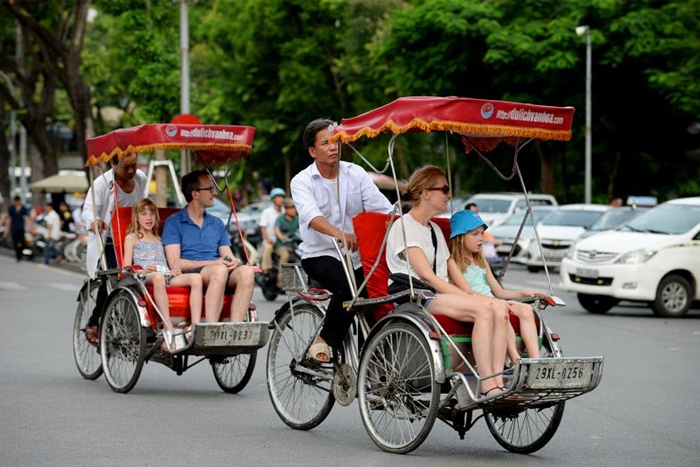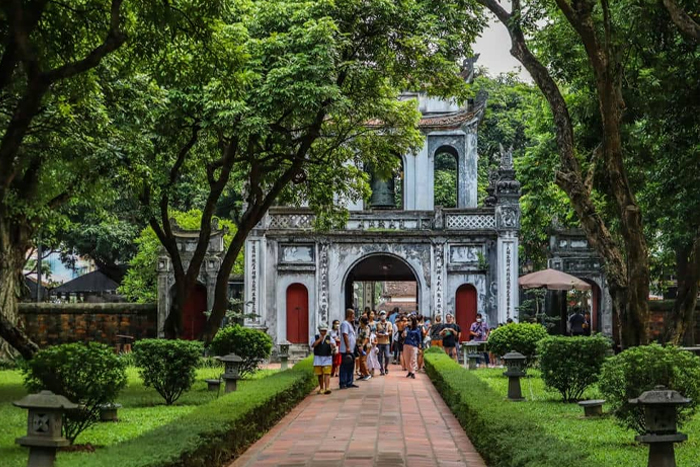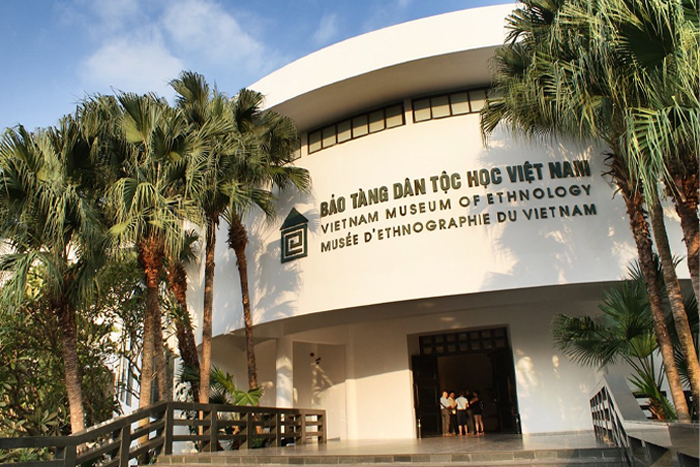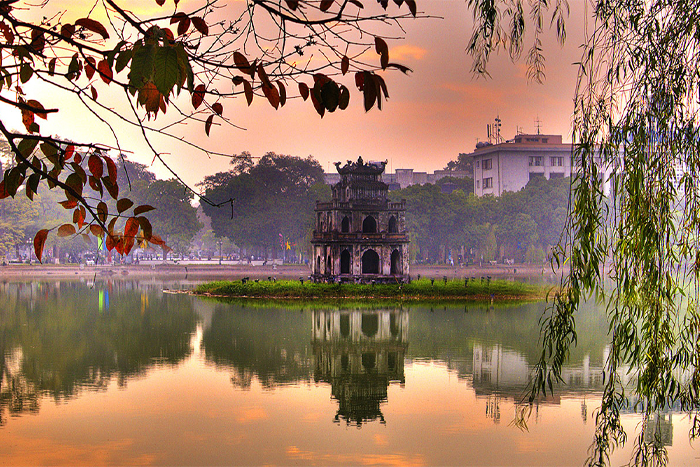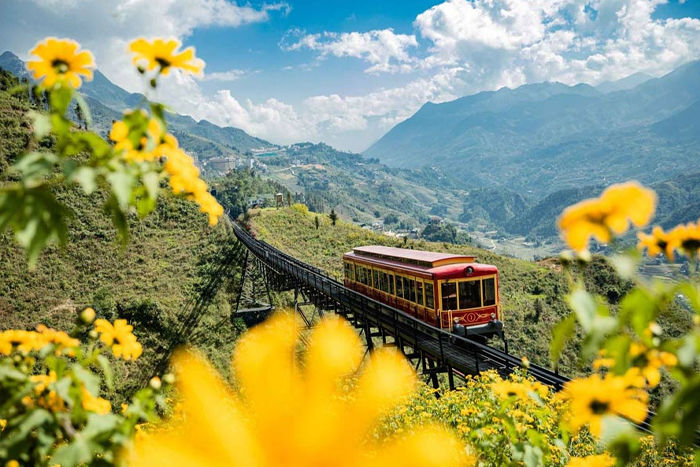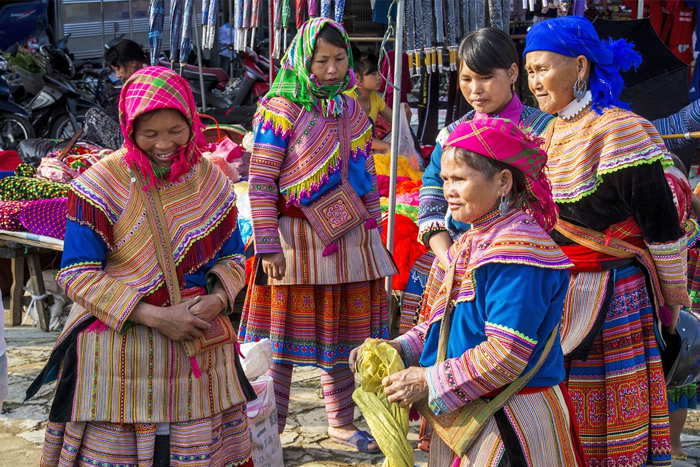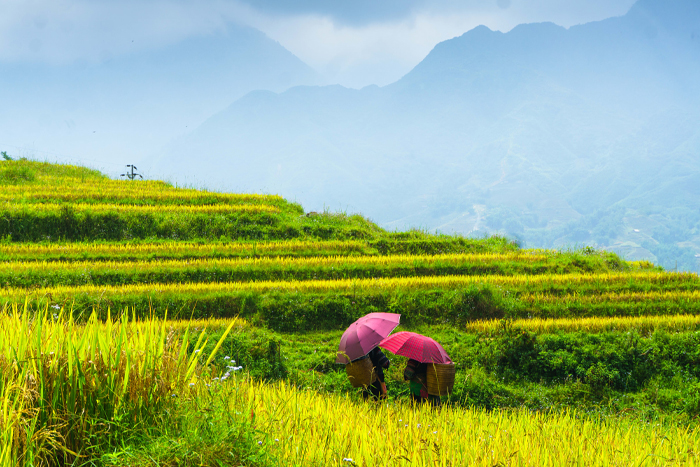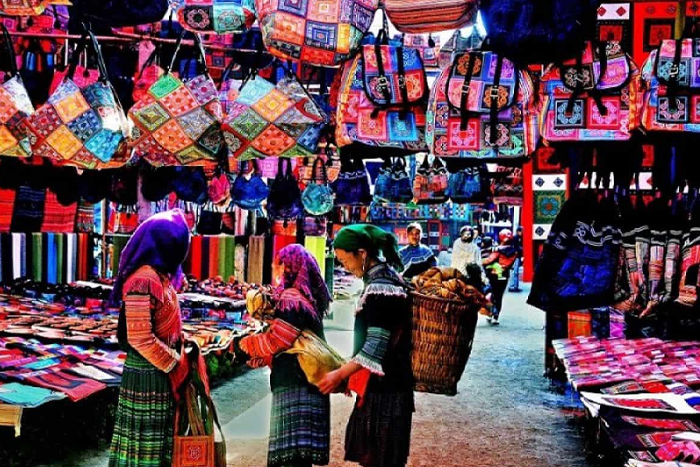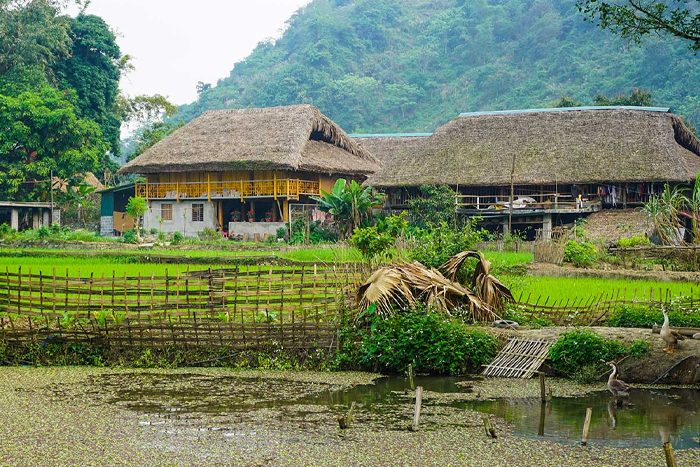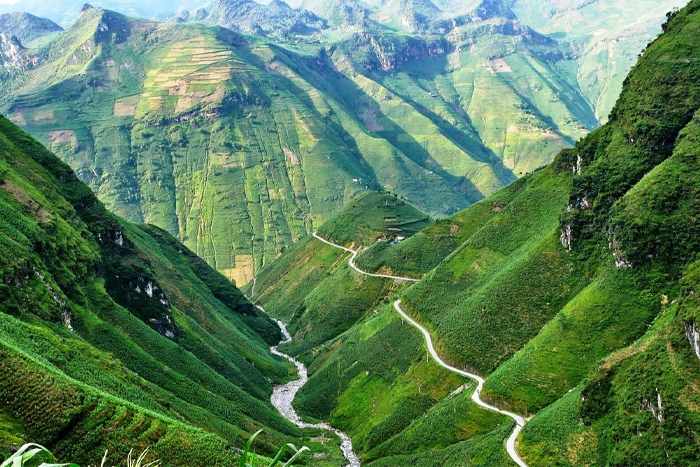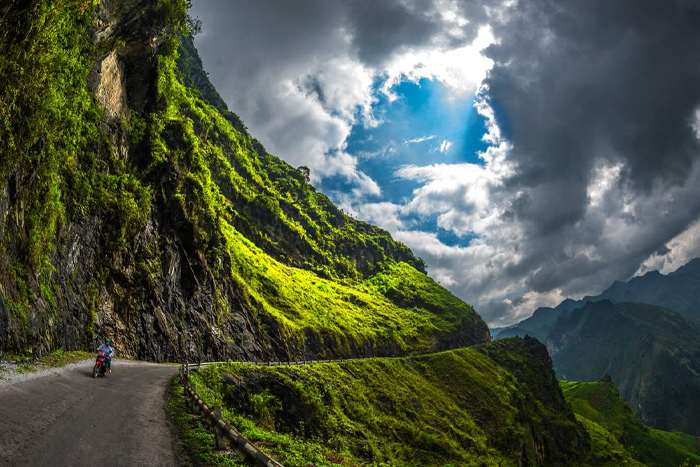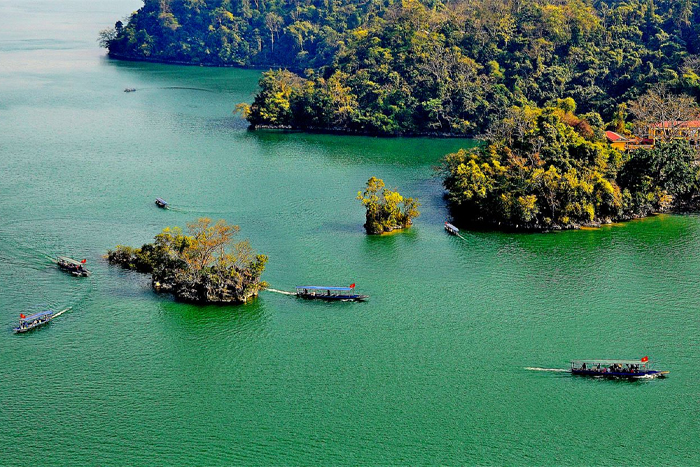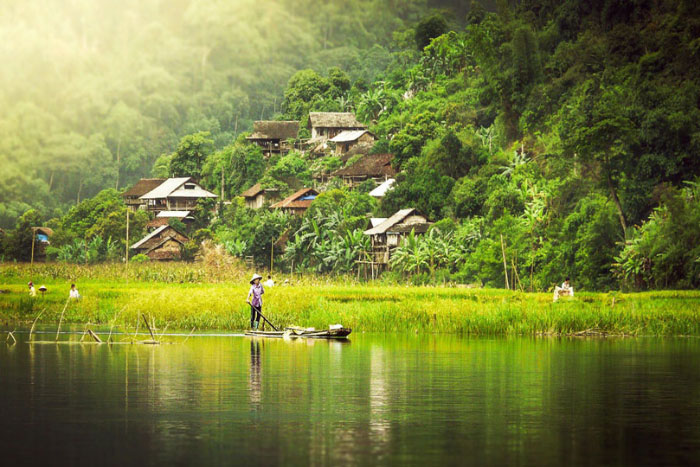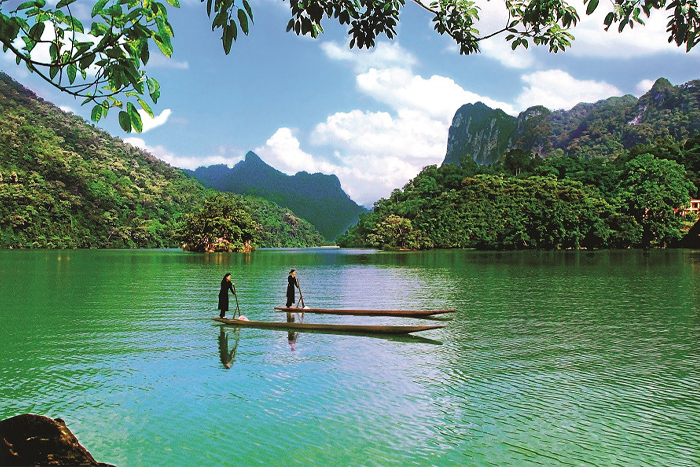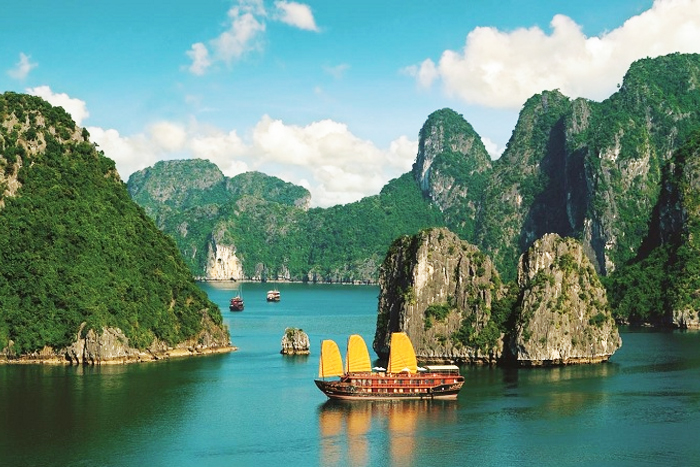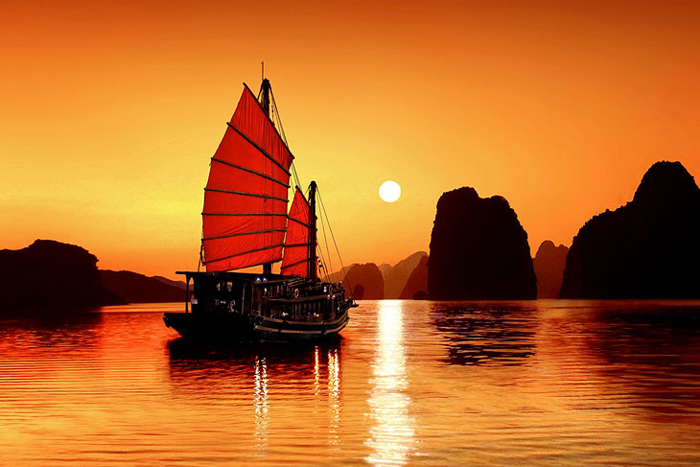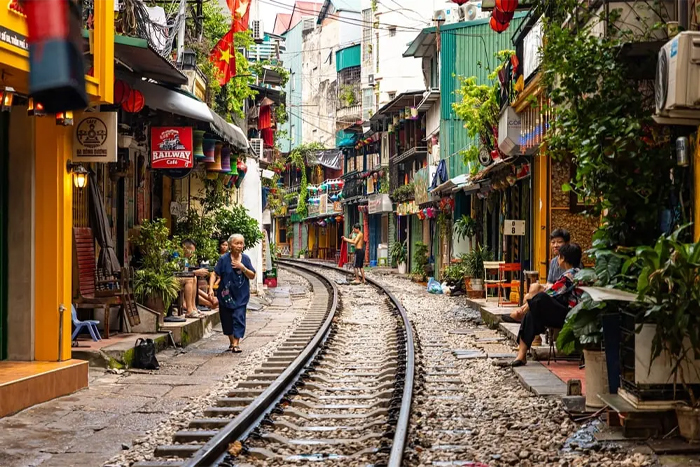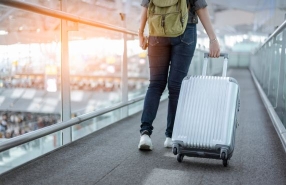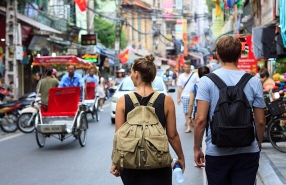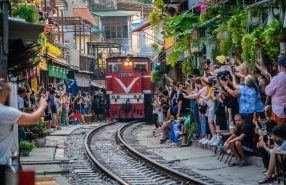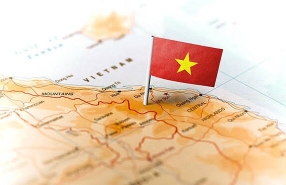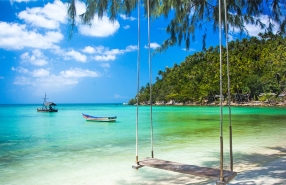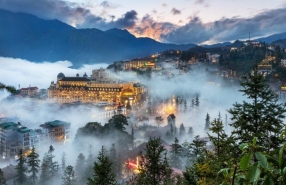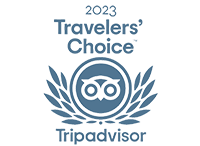Are you planning to spend 10 days in Northern Vietnam but not sure where to go or how to organize your trip? This detailed guide "North Vietnam 10 days" will help you fully experience the region’s breathtaking natural beauty, rich culture, and the authentic life of its mountain minorities. More than just a day-by-day itinerary, this guide provides insider tips on where to go, what to eat, where to stay, and how much a Vietnam 10 day trip costs. You’ll also find suggestions for unique cultural encounters and must-see highlights. Dive right in and explore the stories and experiences of a traveler who spent 10 unforgettable days in Northern Vietnam with Autour Asia!
North vietnam itinerary 10 days
1. Day 1: Arrival in Hanoi
What to do in 10 days in northern Vietnam? I arrived at Hanoi airport early in the day. Immigration formalities and baggage claim went smoothly. At the exit, I was warmly welcomed by my French-speaking guide, which was very reassuring after a long flight. The transfer to the hotel was well organized.
💡 A useful tip: the standard check-in time is 2:00 PM, so if you arrive early, plan for an extra fee for early check-in (subject to availability).
After a short rest, I began exploring Hanoi by cyclo - a truly enjoyable way to soak up the city’s atmosphere. I wandered through the famous "36 guild streets", a fascinating area with narrow alleys dedicated to traditional trades: silk street, cotton street… each one with its own charm. Walking around, I discovered streets lined with jewelers, lanterns, and herbal medicine shops, and also stopped in front of the beautiful St. Joseph’s Cathedral.
In the evening, I enjoyed my first Phở, an unmissable staple of Vietnamese cuisine. A perfect first taste of Hanoi’s vibrant food scene! I then returned to my hotel for my first night in Hanoi, already captivated by the city’s unique atmosphere.
📍 Where to stay in Hanoi? Day 1: Hotel de Rond - 3 ⭐️
2. Day 2: Hanoi
On the second day of my North Vietnam 10 day itinerary, I started with an orientation tour of Hanoi’s residential district. Thanks to my English-speaking guide arranged by Autour Asia, I discovered the former Governor’s Palace, a striking colonial-era building. The visit was very well explained, with fascinating anecdotes. We paused for photos in front of the Ho Chi Minh Mausoleum, an impressive memorial site, then continued with a walk through Ba Dinh Square before admiring the iconic One-Pillar Pagoda.
Next, I visited the
Temple of Literature, founded in 1070. My guide brought the site to life with engaging stories, helping me better understand its importance in Vietnamese history and culture.
For lunch, Autour Asia had booked me a table to try Cha Ca, a local specialty of grilled fish with dill and peanuts. It was delicious, and I really appreciated that the agency introduced me to this dish I might not have chosen on my own.
In the afternoon, we explored the
Museum of Ethnology (closed on Mondays, but the agency had smartly scheduled it for another day). I especially enjoyed the outdoor garden with its traditional minority houses - a great introduction to the mountainous north I’d soon be visiting.
Later, we took a long walk across the old Paul Doumer Bridge, offering stunning views over the Red River. My guide also pointed out daily local life along the way, which made the experience feel very authentic.
The stroll continued around Hoan Kiem Lake to the statue of Ly Thai To, a peaceful and relaxing spot in the heart of the city. In the evening, I attended a water puppet show - reserved in advance by Autour Asia - an unmissable cultural performance that I highly recommend.
To end the day, Autour Asia had organized a street food tour in the Old Quarter. I tasted several typical dishes and shared a local "bia hoi" (fresh beer) in a lively and friendly atmosphere. This was a real highlight of the program, perfectly organized so that I didn’t have to worry about anything.
I then returned to my hotel for the night, fully satisfied with such a rich and seamlessly arranged day by Autour Asia.
Where to stay? Day 2: Hotel de Rond - 3 ⭐️
3. Day 3: Hanoi - Sapa - Lao Chai - Ta Van
On the third day of my 10 days north vietnam, I left Hanoi early in the morning to reach Lao Cai, in the mountainous northwest near the Chinese border. The trip was long, but Autour Asia had arranged everything for comfort, with breaks along the way and a guide who was always attentive.
What to do in Sapa Vietnam? Upon arriving in Sapa, perched at 1,600 meters above sea level, I was immediately amazed by the terraced rice fields and the refreshing mountain air. A short stroll through the town gave me a glimpse of the bustling market district, local shops, and especially the stone church - the true symbol of Sapa.
Lunch at a local restaurant was delicious and well chosen. Once again, the agency’s planning allowed me to taste regional specialties I wouldn’t have discovered on my own.
In the afternoon, we set out for the stunning Muong Hoa Valley, one of the most beautiful places I saw in Vietnam. The hike to Lao Chai village immersed me in the daily life of the Hmong people: traditional black wooden houses, weaving workshops, and endless terraced rice fields. My French-speaking guide shared detailed insights into local culture and traditions, making the visit even more enriching.
We continued walking through spectacular landscapes until reaching
Ta Van village, home to the Mong, Dzay, and Red Dao ethnic groups. Meeting the locals was warm and welcoming, a true moment of cultural exchange that I deeply appreciated.
At the end of the day, I was hosted by a Dzay family for dinner and the night. The comfort was simple (mattresses, mosquito nets, shared room), but Autour Asia had informed me in advance, so I knew what to expect. It turned out to be an authentic and unforgettable experience: sharing a meal with the family, tasting their homemade dishes, and living for a moment at the rhythm of rural Vietnam.
4. Day 4: Ta Van - Bac Ha
After a simple but hearty breakfast with my Dzay host family, I continued my journey to Bac Ha, a picturesque town in the mountains of northwestern Vietnam. Bac Ha is known as the capital of the Flower Hmong, and I was immediately impressed by their colorful costumes and vibrant energy. I also had the chance to meet people from other ethnic groups such as the Tay, Nung, Dao, and Phu La.
On the way, Autour Asia had arranged a very interesting stop near the Vietnam - China border. I was able to observe the lively activity of local traders and visit a tea plantation. These moments gave me a better understanding of daily life and the local economy.
In the afternoon, I enjoyed a beautiful hike around Bac Ha, through breathtaking landscapes: terraced rice fields, lush paddies, and local crops. The walk was perfectly adapted to my pace thanks to my guide, and I passed through several tribal hamlets where the villagers welcomed us with warm smiles and curiosity.
Lunch was taken along the excursion route - simple, but tasty. By late afternoon, I settled into a homestay for the night. The accommodation was in a large shared room divided by curtains, with mattresses, sheets, blankets, and mosquito nets. The bathrooms were separate - basic, but clean and sufficient. Autour Asia had clearly explained in advance the difference between traditional homestays and standard hotels, which allowed me to make an informed choice. It’s also a great way to optimize your Vietnam 10 day trip cost depending on the level of comfort you prefer.
5. Day 5: Bac Ha - Thon Tha village - Ha Giang
On the fifth day of my North Vietnam tour, I began with a visit to the Bac Ha ethnic market (held on Sundays). This was without a doubt one of the most colorful and lively moments of the trip: Flower Hmong, Tay, Nung, and Dzay people gathered in their traditional costumes to trade goods, livestock, and handicrafts. Autour Asia had advised me to go early to avoid the crowds and better observe the exchanges - an excellent tip. I then had some free time to wander around on my own and take photos, which allowed me to truly soak up the vibrant atmosphere.
After this immersion, we hit the road towards Ha Giang. Although the drive was long, the scenery was spectacular: wild mountains, deep valleys, and authentic northern Vietnamese landscapes. Lunch was taken en route, well-organized by the agency as always, which made the journey smooth and worry-free.
Upon arrival, I discovered the charming village of Thon Tha. Surrounded by rice fields, ponds, granite rocks, and traditional stilt houses, it’s a peaceful place where you immediately feel the serenity of the countryside. My guide took the time to introduce me to the villagers, making the experience even warmer and more personal.
In the evening, I stayed in a homestay, in a large shared room divided by curtains. The comfort was simple but clean (mattresses, mosquito nets, separate bathrooms). Once again, Autour Asia had prepared me well by explaining this type of accommodation in advance, which allowed me to fully enjoy the authentic experience without any surprises.
6. Day 6: Ha Giang - Dong Van Geopark / Meo Vac
On the sixth day of my
Vietnam 10 day trip, I set off towards the
Dong Van Karst Plateau, a UNESCO Global Geopark. The landscapes were absolutely breathtaking: jagged limestone peaks, dizzying canyons, and dramatic rock formations. My Autour Asia guide passionately explained the geological history of the region, which made the visit even more fascinating.
Along the way, we stopped at a viewpoint overlooking Nui Doi Valley, famous for its twin mountains. I also visited the Palace of the former Hmong King, a historical site that offers deeper insight into the Hmong people and their traditions. Passing through small earthen villages along the route gave me a rare sense of authenticity.
Lunch was served during the excursion at a carefully selected local restaurant. I really appreciated the variety and quality of meals organized by the agency, always well adapted for travelers.
The afternoon brought one of the highlights of the entire trip: crossing the legendary Ma Pi Leng Pass. Without a doubt, it’s one of the most spectacular panoramas in Vietnam, with limestone mountains plunging into the Nho Que River and Hmong villages perched high on the cliffs. My guide arranged several photo stops, which allowed me to truly take in the beauty of the scenery.
By late afternoon, we arrived in
Meo Vac, where Autour Asia had reserved a comfortable hotel. After such an intense and awe-inspiring day, a good dinner and restful night’s sleep were more than welcome.
7. Day 7: Meo Vac - Bao Lac - Pac Ngoi - Ba Be Lake
After a simple breakfast, I left Meo Vac early in the morning to head towards Ba Be National Park, following a scenic mountain road. The karst landscapes along the way were absolutely stunning. Often called the "green lung of Northern Vietnam", Ba Be impressed me with its wild beauty: lush limestone peaks, vast lakes, and a peaceful atmosphere.
On the way, Autour Asia had arranged a stop in Bao Lac, where I had the chance to meet the Black Lolo people, featured in the French TV show “Rendez-vous en Terre Inconnue.” My guide took the time to explain their traditions and way of life - a rare and fascinating encounter.
Lunch was along the route in a small local restaurant. As always, the agency had chosen an authentic and pleasant spot, which made the journey even more immersive.
We then continued towards Ba Be along a charming mountain road, eventually arriving at
Pac Ngoi village, home to the Tay ethnic group. Their life revolves around fishing and farming, and I immediately felt the serenity of this setting.
By late afternoon, I settled into a traditional stilt house overlooking the river that flows into Ba Be Lake. I spent the night in a large shared room with mattresses, sheets, mosquito nets, and separate bathrooms. The comfort was simple but clean, exactly as Autour Asia had explained in advance. It allowed me to live an authentic experience close to the locals, while still being at ease.
8. Day 8: Ba Be Lake - Hanoi
On the eighth day of my North vietnam itinerary 10 days, I started the morning with a boat trip from Buoc Luom pier. Cruising on Ba Be Lake, located at 150 meters above sea level and surrounded by limestone mountains, was a magical experience. The boat followed the Nang River, with its striking karst peaks, before entering the Puong Cave, where stalactites and stalagmites created a fairy-tale setting. We continued on to the wild and peaceful Dau Dang Waterfall.
Afterwards, I took a walk through
Pac Ngoi village, home to the Tay ethnic group and nestled at the foot of limestone cliffs. Around sixty families still live in traditional bamboo stilt houses, and it was fascinating to observe their simple lifestyle in perfect harmony with nature. My French-speaking guide, arranged by Autour Asia, made the visit lively by sharing many local anecdotes.
Lunch was taken along the route, before we left Ba Be and headed back towards Hanoi. Although the mountain drive was long, it was made pleasant by the well-planned stops arranged by the agency to visit traditional Tay houses and discover local curiosities. These little breaks allowed me to enjoy the breathtaking scenery even more.
By late afternoon, we arrived in Hanoi, where Autour Asia had booked a comfortable hotel - perfect for some rest after several nights of homestays. Dinner at a local restaurant was included, which allowed me to end the day in a warm and relaxed atmosphere.
9. Day 9: Hanoi - Ha Long
In the morning, I left Hanoi for the world-famous Ha Long Bay, crossing the fertile Red River Delta along the way. Autour Asia had arranged a stop at a local market and a handicraft center, which gave me the chance to discover typical regional products and observe daily life in the countryside.
Upon arrival, I boarded a non-private junk boat at Tuan Chau port. The welcome was warm: a refreshing drink, a safety briefing, and then I was shown to my private cabin, equipped with a fan, hot shower, and toilet. The comfort was much better than I had expected for an overnight stay on a boat.
The cruise began through Ha Long Bay (sometimes Bai Tu Long Bay, depending on the itinerary). The scenery was truly breathtaking - hundreds of limestone islets rising from the emerald waters, bathed in magical light. I relaxed on the upper deck, admiring the spectacular sunset, an unforgettable moment.
Dinner on board was excellent, featuring freshly prepared seafood and fish. I especially appreciated the quality of the meals, another detail perfectly managed by Autour Asia. The evening ended with a simple but enjoyable night fishing session.
Spending the night on the junk boat is something I’ll never forget: falling asleep in the middle of the bay, under the stars, is a unique experience. It’s worth noting that the itinerary can be adjusted by the captain depending on tides and weather, but everything was well organized to ensure the cruise remained smooth and enjoyable.
Finally, Autour Asia offered several categories of junks (standard, boutique, luxury), which made it easy to adapt the experience to my North Vietnam 10-day travel budget. I found this flexibility very valuable.
10. Day 10: Departure from Hanoi
After breakfast at the hotel, I had some free time for my final personal discoveries and to buy a few souvenirs in Hanoi. The room had to be checked out by noon, but Autour Asia had organized the timing perfectly, which allowed me to enjoy these last hours without stress.
Lunch was free and at my own expense, giving me the opportunity to try one last local specialty at my own pace. Later, depending on my flight schedule, I met the driver at the hotel reception for my transfer to the airport (without a guide). Everything went smoothly.
The journey ended with the airport transfer for my return flight. I keep wonderful memories of this adventure: the quality of Autour Asia’s organization, the punctuality of the drivers, and the smooth handling of all transfers truly made this 10-day North Vietnam itinerary comfortable and enjoyable.
In conclusion, this 10-day trip to North Vietnam offers a complete immersion into the region’s cultural diversity, spectacular landscapes, and authentic traditions. From the vibrant city of Hanoi to the colorful ethnic markets, from the terraced rice fields of Sapa to the karst mountains of Ha Giang, and from the peaceful waters of Ba Be Lake to the magical Ha Long Bay, each step revealed a rich and fascinating Vietnam. Thanks to the efficient planning and attentive services of Autour Asia, this 10 days in northern vietnam remains an unforgettable memory, combining comfort, authenticity, and adventure.
Get in touch with Autour Asia,
Vietnam tour agency, to receive full details on the cost of a
10-day Northern Vietnam trip along with our best personalized offers!
👉Request a free quote with Autour Asia: contact us!
Tap to discover more information about:
Ivana Filipova
5.0
Excellent
How much does a 10-day trip to North Vietnam cost?
A 10 days in Northern Vietnam can cost between $999 and $1,600 per person, depending on the type of tour you choose. Group tours with standard accommodations and meals included are usually on the lower end of the range, while private tours with boutique hotels or premium services fall on the higher end. Prices may also vary depending on the season (high or low), included activities (Halong Bay cruise, trekking in Sapa, cultural excursions in Hanoi, Ninh Binh, Ha Giang…), and the level of comfort you prefer. International flights are usually not included, but you can request a personalized quote from agencies like Autour Asia to get an exact price tailored to your preferences.
Jacques Godeau
5.0
Excellent
What is the best month to visit North Vietnam for 10 days?
The best month to visit North Vietnam 10 days depends on what you are looking for, but October and November are generally the ideal months. During this time, the weather is dry, temperatures are pleasant (20–28°C), and the landscapes are at their peak, especially the golden rice terraces after the harvest. Spring, from March to April, is also an excellent choice, offering lush vegetation and mild temperatures. On the other hand, winter (December–February) can be cold and foggy in the mountains of Sapa or Ha Giang, while summer (May–August) is hot and rainy, making it less suitable for trekking.
Philibert Boucher
5.0
Excellent
Can you combine North and Central Vietnam in 10 days?
Technically, it is possible to combine North and Central Vietnam in a 10-day itinerary, but the schedule will be quite packed and fast-paced. Most travelers prefer to dedicate 10 days only to Northern Vietnam (Hanoi, Halong Bay, Sapa, Ninh Binh, Ha Giang) to fully enjoy the landscapes and local culture without rushing. If you really want to include Central Vietnam (Hue, Da Nang, Hoi An), you will need to take domestic flights to save time—splitting your trip with around 5 days in the North and 4–5 days in the Center. However, for a more balanced and relaxed journey, a 12- to 14-day Vietnam itinerary is recommended to properly explore both regions.

